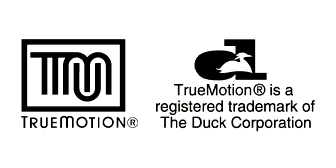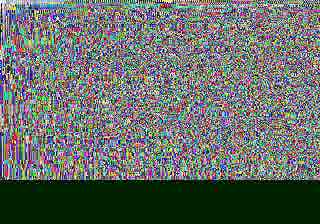I don’t learn very quickly. A good illustration of this personal shortcoming is my ongoing battle with the Duck TrueMotion 1 video codec, a conflict that is well into its 8th year at this point. This was one of my first exposures to the field of multimedia hacking as I discovered some Duck TM1-encoded AVI files on select Sega Saturn console games all the way back in 1998. I found a few Japanese Windows programs that could play the files. Early in my multimedia hacking career, I worked hard to reverse engineer the TM1 algorithm.

In 2002, On2 (formerly Duck) open sourced their VP3 codec (which would later become Theora). I kept stubbornly trying to RE TM1 from the binary when Alex notified me that On2’s open source VpVision package contains the decoders for TrueMotion 1 and 2. It also included the decoders for Duck DK3 and DK4 ADPCM, both of which I successfully had RE’d from binary code, and at around the time that VpVision had been released as open source.
The VpVision source has been quite valuable in RE’ing both the TM1 and TM2 algorithms. It’s extremely difficult to understand, however, as is often the case with code produced on a deadline. Some TM1 files still fail to work correctly with the native FFmpeg decoder. I always thought it would be useful if I could compile the code and run it in a step debugger, or perhaps profile it with other tools, in order to sort out the correct operation when decoding certain files. But the code seemed like such a mess that I didn’t think it would compile on Linux. It looked like it would only compile on Windows or maybe Mac, and only with some effort.


